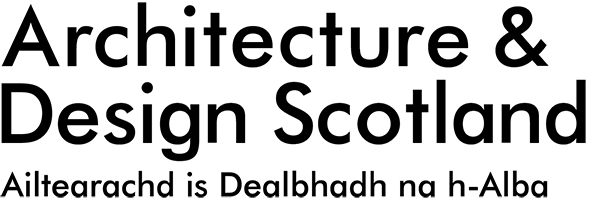Learning from the Climate Action Towns at the Gathering event and resource launch

The culmination of the Climate Action Towns project was one last Gathering, held at the Engine Shed in Stirling in March 2024. This was a chance to bring people together to celebrate and share the lessons from the past three years of extensive work.
Heather Claridge, Director of Design at Architecture and Design Scotland (A&DS), initiated proceedings by launching the range of resources, the findings and learnings from which would be discussed during the course of the event. The resources comprise a report, toolkit and series of videos which give a broad overview of the project, and provide advice on how others can take action.
Partnership working
Ann Allen, Chair of A&DS, gave a keynote speech highlighting the need for ‘place, partnership and persistence’ as the key elements to delivering climate action. By taking incremental steps together to deal with climate change locally, we can start to see a significant ripple effect which can continue to grow and expand.
A reflection of the work from the past three years was then presented by Laura Hainey, Principal Design Officer and overall lead on the project. Laura noted that each of the nine towns had very different contexts and priorities, so it is not possible to promote a one size fits all approach to climate action. However, there are several common lessons that have been learned, which have been distilled into five key ingredients to taking action. These can be found outlined in the report and toolkit.
Identifying what's important
In each town, the focus was not to start with which climate action initiatives to deliver, but to begin to understand what is most important to the people and place.
Exploring climate risks in each place helped to identify the issues that are most relevant, and break down the overwhelming nature of climate change into relatable issues that reflect the needs and concerns of each location.
To find out more about how communities started their climate conversations, watch this short video.
I hope the community can continue to work together, and individually, to make a difference to our community [on climate impacts in Blackburn]
After an engaging Q&A session, Heather Claridge chaired a panel discussion with Fiona Richardson (The Highland Council), Louisa Harvey (Scottish Government), Francesca Lynch (Scottish Community Development Centre), and Karen Sutherland (Green Action Trust). Their conversation highlighted some key areas for how to take forward place-based climate actions, as well as discussing some challenges and opportunities.
Embedding action
On the question of what’s next, it was agreed the need to continue bringing people together around shared experiences, and embedding actions into local and area-based plans.
Some challenges included how to engage with communities over a long time frame (climate actions rarely happen overnight!), how to ensure that information keeps flowing and momentum is maintained. Additionally, how do we ensure we engage with a broad spectrum of people?
It is important that climate should not be seen as a technical subject nor an issue separate from all others, but one which can be brought into all discussions. Everyone can get involved!
Benefits of climate action
Noted too was the importance of highlighting the benefits of climate action, not just the negative connotations of being in a climate emergency.
The panel considered the need for wider infrastructures to support people and communities, to help build capacity, and get local partnerships and authorities to work better together. Having knowledge of local levers and local decision making powers can help, as would opening up conversations between planning and community engagement groups. There was a discussion around the need to better target funding, as well as ensure longevity and momentum of funding.
Role of design
And what of the role of design in taking climate action? Design, and co-design, can be an opportunity to tap into the desires of the community and encourage collaboration. By incorporating clever design we can make better places, and stronger links between people and the natural environment.
A closing point was posed about how we can step up to the challenges faced. At every scale, we need to step up and act, and even tiny interventions can make an impact. We also need to continue to share knowledge!
Architecture and Design Scotland is committed to taking forward the learnings of Climate Action Towns by continuing to embed the lessons in all our work.
It was interesting and thought provoking to hear what was happening in other areas
Contact us
We welcome the opportunity to hear from you on this topic, and invite you to share how you use the resources we have published.
